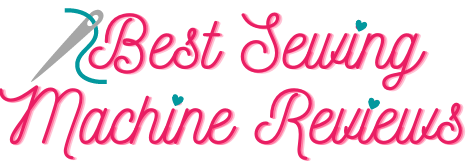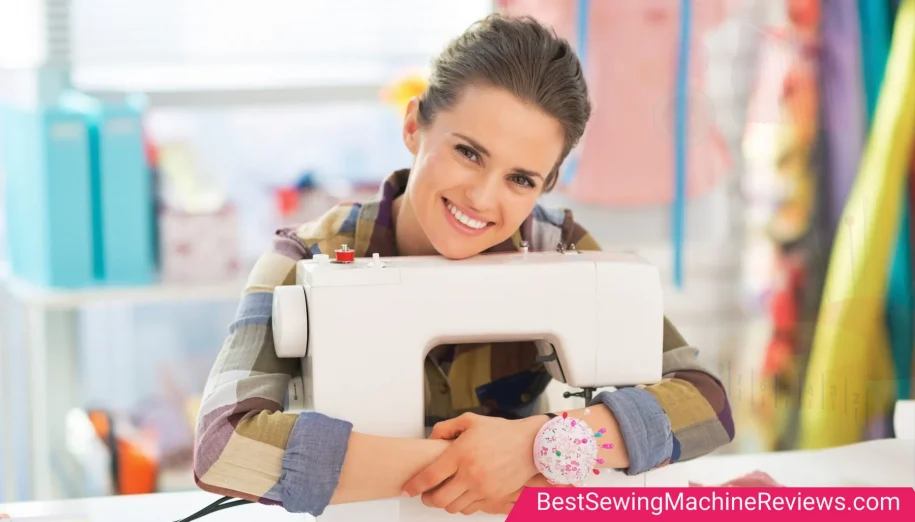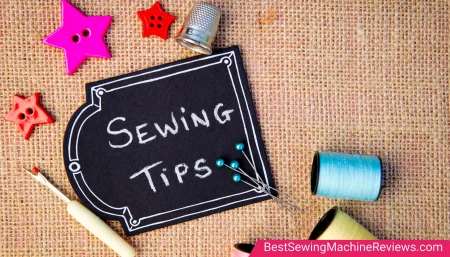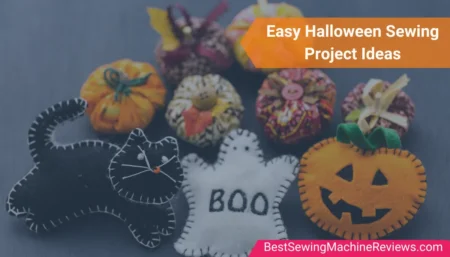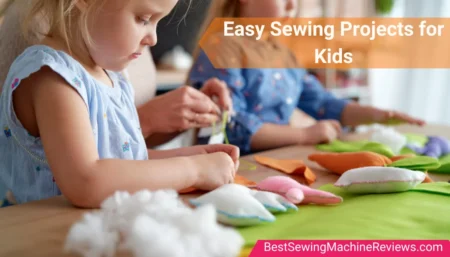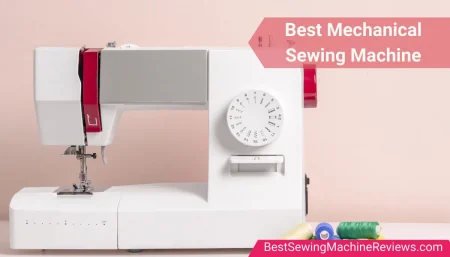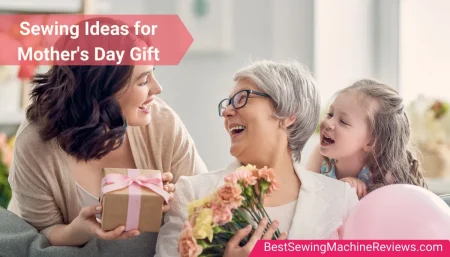A sewing machine is a device used to stitch and sew fabric, leather, and apparel parts. But, if you want to know how a sewing machine works, you may find this piece of information worth reading. As it will provide a detailed insight for learning the parts of a sewing machine.
In particular this informational guide will allow you to understand the parts of a sewing machine for computerized and manual machines. However, you will find this diagram and elaboration reasonably helpful to understand different parts of a sewing machine and its functions.

- 1. Power Button
- 2. Bobbin
- 3. Bobbin Case among the crucial parts of a Sewing Machine
- 4. Bobbin Winder
- 5. Bobbin winder stopper
- 6. Bobbin Cover a Sewing Machine Part
- 7. Bobbin Driver
- 8. Thread Tension Dial
- 9. Thread take-up lever
- 10. Tension disk
- 11. Thread cutter
- 12. Detachable Foot Pedal
- 13. Affixed Foot Pedal
- 14. Start/ Stop/ Operational Control Button
- 15. Speed Control Lever
- 16. Reverse stitch lever
- 17. Needle threader
- 18. Needles, one of the main parts of a sewing machine
- 19. Needle Clamp
- 20. Needle Positioning Button
- 21. Needle plate /Throat plate
- 22. Double Needles
- 23. Presser Foot holder
- 24. Needle presser foot
- 25. Presser Foot Lever
- 26. Oil Tank
- 27. Feed Dog
- 28. Handwheel
- 29. Stitch Size Regulator
- 30. Stitch Selector
- 31. Storage Section
- 32. Spool Pin
- 33. Ruler
- 34. Spool Caps
- 35. Button Shank Plate
- 36. Felt Cushion
- 37. Lamp / LED Light
- Conclusion
- Frequently Asked Questions
These are the essential parts of a sewing machine that are mandatory for a sewing machine to perform its regular function.
1. Power Button
The power button of a sewing machine is used to turn off or turn on the device. . The machinery’s power supply is also controlled by this device. Sewing machines often have it on the underside of the machine.
Depending on the model, the sewing machine’s power button may be located at a different location on the front of the machine. Because they are operated with a hand-arm on their side, manual machines lack a power button. Whereas t he power supply button is now located on the side of some newer versions.

2. Bobbin
The bobbin is a cylinder on which the thread is wound. It holds the thread and feeds thread to the upper part (needle) from the lower part for sewing. A bobbin winder is used to wound a bobbin.
Some machines won’t stitch if the thread is uneven if done manually. When stitching, it serves as a means of distributing thread uniformly. The materials used to make these are both metal and plastic. While each bobbin is manufactured for a specific type of machine. Metal-bobbin-required machines can’t use plastic ones, and the other way around.
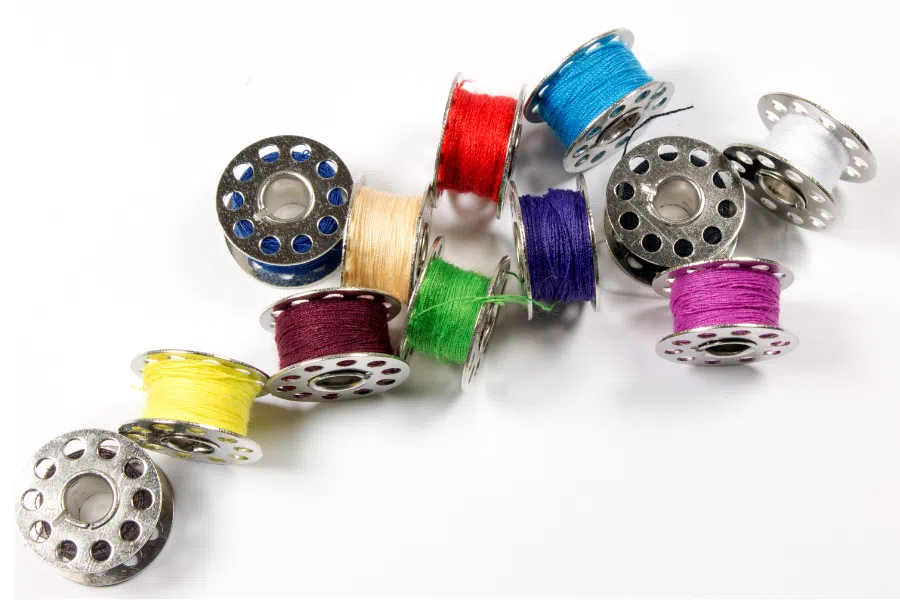
3. Bobbin Case among the crucial parts of a Sewing Machine
The bobbin cylinder is held in position by the bobbin case, which is made of metal. While the shell of a snail with its tail projecting from it is the typical shape of the casing.
There are a few things to keep in mind when putting in the bobbin in the case: When using a sewing machine, this element of the machine maintains the bobbin in place while you sew, allowing you to control the flow of thread. Most machines have their own bobbin case, although depending on the machine configuration, certain models may share one.
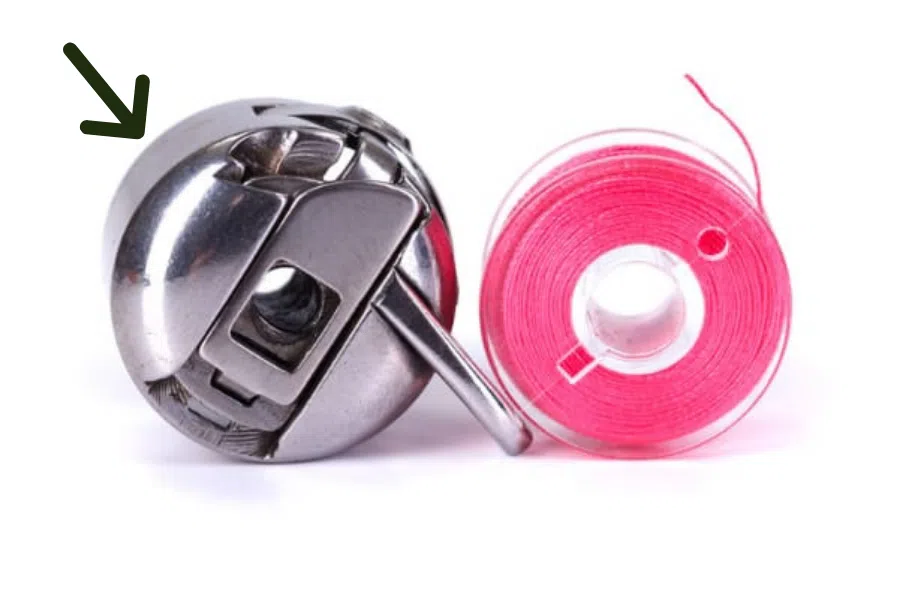
4. Bobbin Winder
An empty bobbin is placed over the spindle of a bobbin winder, and it wounds the thread around the bobbin with the foot pedal or a control button on the machine.
Amazingly this feature of a sewing machine not just saves times, in fact it allows a flawless thread winding over the bobbin for smooth sewing experience.
However, some sewing machines do not perform effectively if the thread is manually wrapped on the machine. Consequently, in some circumstances, winding the thread around the bobbin is a necessary step in every sewing process.
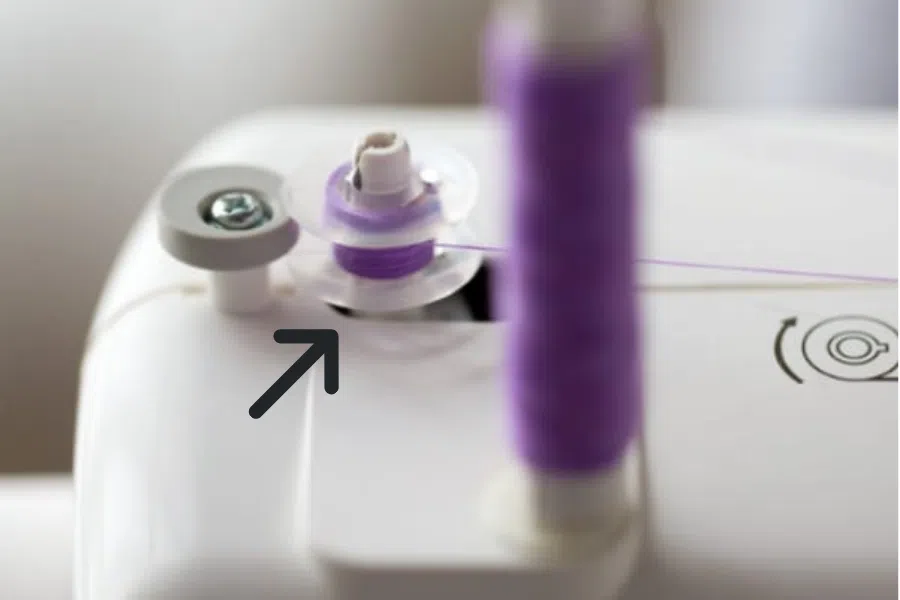
5. Bobbin winder stopper
An overly wounded bobbin does not fit in the bobbin case, nor does it allow space to thread to move around. Here when a bobbin winder makes sure to wound just the right amount of thread over the bobbin. Once the bobbin is full, it automatically stops the winding process.
This process helps the sewers to avoid any sort of over wounded thread on the bobbin. It saves a lot of time by making the process of sewing simple.
It is designed in such a way that once the bobbin is wounded to a full extent, it instantly removes the grip of the winder to stop further thread winding.
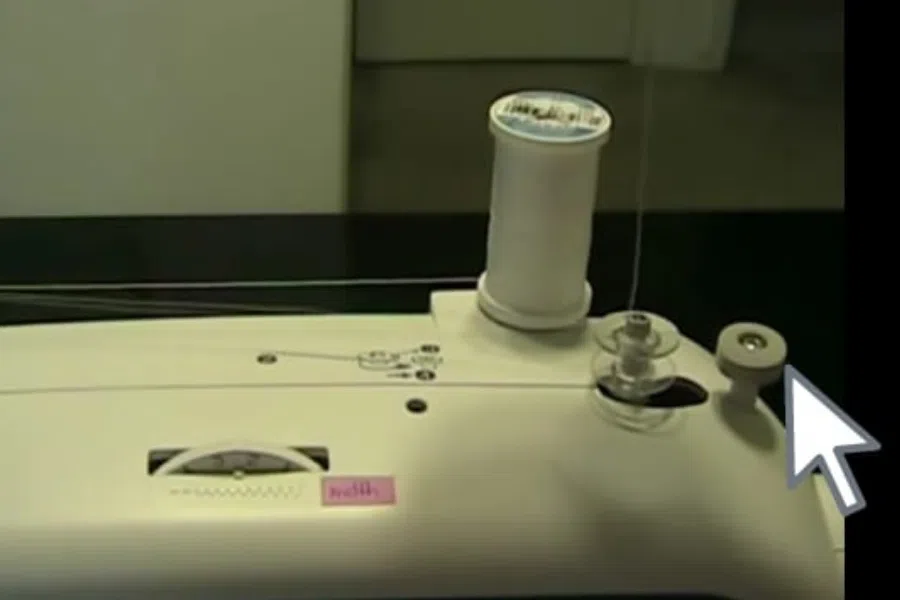
6. Bobbin Cover a Sewing Machine Part
Bobbin cover can be found in top-loading machines. It is a plastic cover placed over the top part and right in front of the needle plate.
Where the bobbin is affixed, this may vary depending upon the machine type. Because on front load machines, the bobbin can be affixed in the metal case and loaded from the front.
While a few latest machine models have side ways to open the cover and then load the bobbin case.
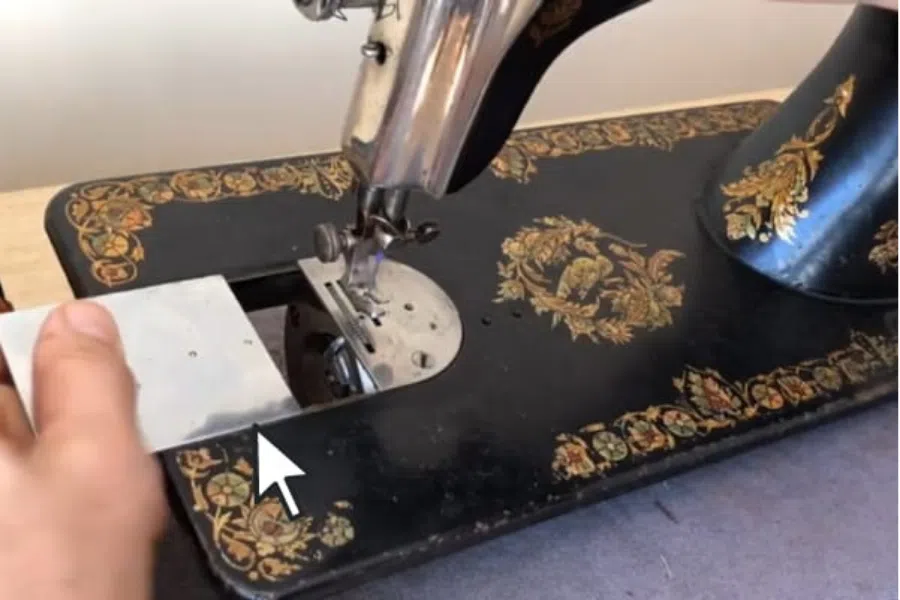
bobbin cover
7. Bobbin Driver
The bobbin driver is found at the bottom of the needle plate. A loaded bobbin, along with its metal case, is inserted in this area. The driver is the part that revolves around the bobbin to release the exact amount of thread for a smooth sewing experience.
These are also known as “Spool Case”, or a “Bobbin Spindle”.
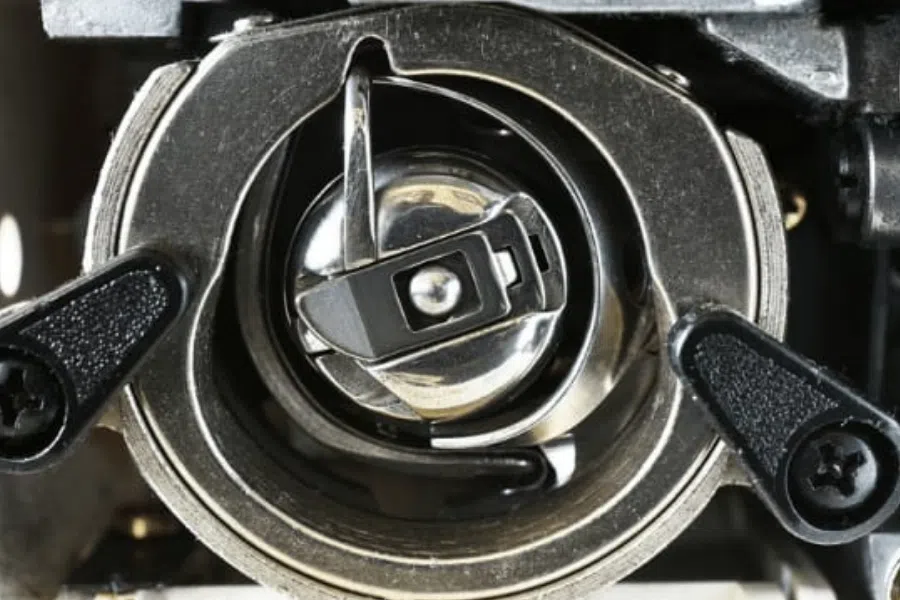
8. Thread Tension Dial
The thread tension dial is usually a small dial with tiny numbers. It is used to set the pressure of the thread while sewing. On different machines, the number of options may vary on the dial. While in older sewing machine models, this part may appear as a lever with 0 to 6 numbers.
This is one of the most important parts of a sewing machine that controls the tension of the thread. It can adjust the thread from tight to very loose pressure. Tensions need to be adjusted based on the type of fabric you will use for a particular project.

Although the thread tension can mainly be adjusted from the top thread. But it is essential to adjust the thread tension so that both the upper and the lower thread are synced perfectly. Because an uneven syncing can result in poor sewing. To be on the safer side you can always check the thread tension by sewing on a small sample before starting the actual project.
9. Thread take-up lever
The thread that takes up a lever is a metal lever which usually appears as a hook. It moves the thread up and down while you are sewing.
It pulls the thread from the spool and helps to give an even supply of thread to the needle.
You may see one of these in the older versions more visible. While latest models usually have slightly visible ones, which are barely noticed.
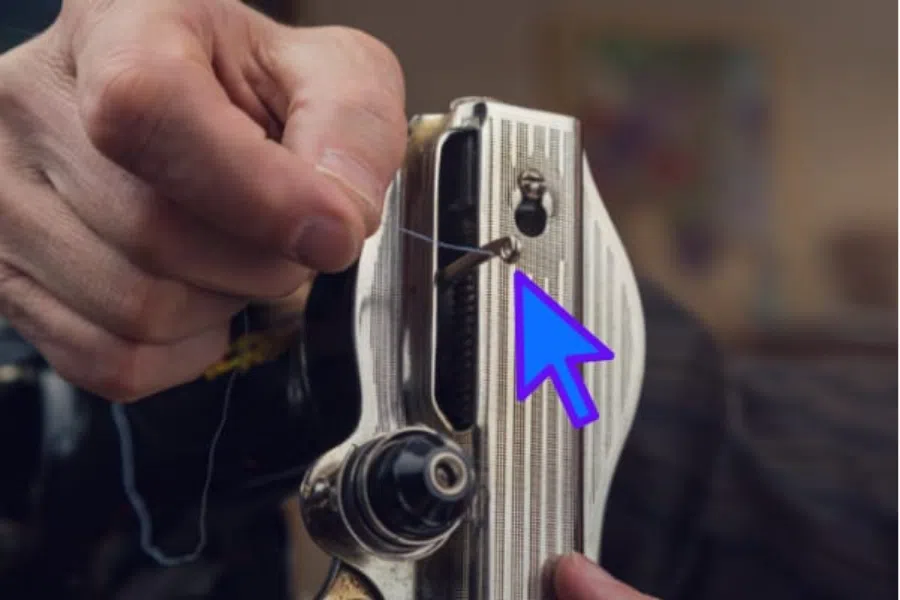
10. Tension disk
The tension disk controls the amount of pressure applied to the thread. It needs to be adjusted if the needle is missing the thread over the fabric. Just the right pressure on the thread can give you a perfect sewing experience.
Computerized machines have this disk fixed inside of the machine.
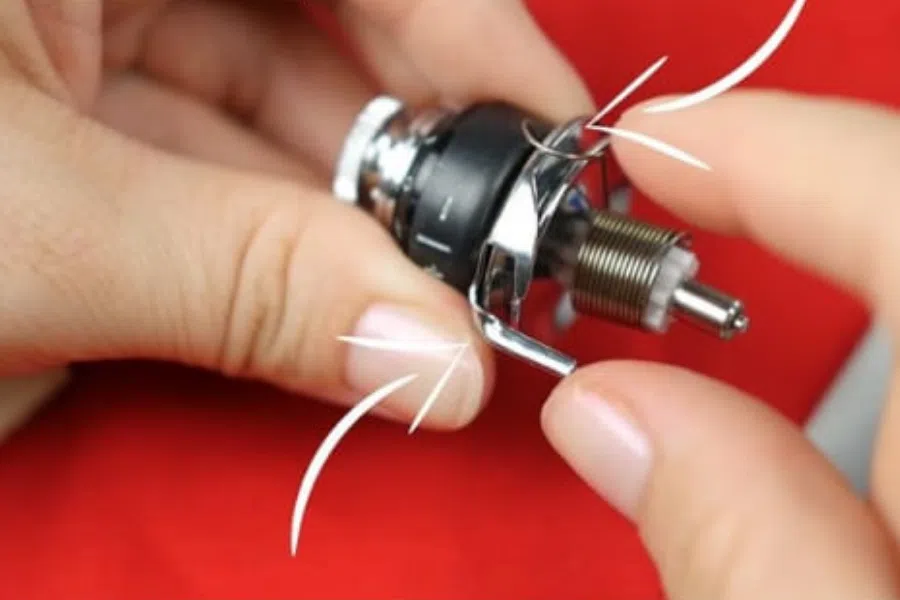
11. Thread cutter
It is a tiny blade fixed on a spool-holder of the machine. It allows convenience in cutting the sewing thread. You can use it as a substitute for your tiny scissors for cutting the thread while you sew.
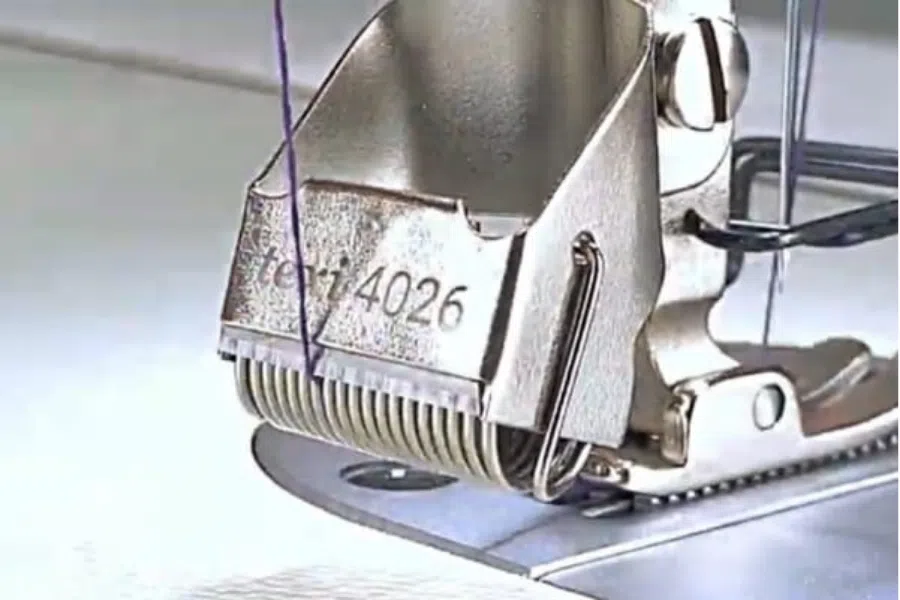
12. Detachable Foot Pedal
It is a small pressing device that provides the signal to your machine when you are ready to start the stitching process. Because upon pressing, your machine will start sewing.
It is plugged into your machine and placed right beneath your table near your foot to use it. The amount of pressure you apply through your foot over it replicates the speed of your sewing. It is a detachable foot pedal.

13. Affixed Foot Pedal
Affixed foot pedals are affixed permanently below your sewing machine table. They appear to be large pedals with a foot resting area. Those are generally found in industrial machines.
With full control over the cloth with both your hands, you can easily use this foot pedal to sew at a certain speed for you.
You can control its speed with the pressure of your feet. The more the pressure, the more the speed is.
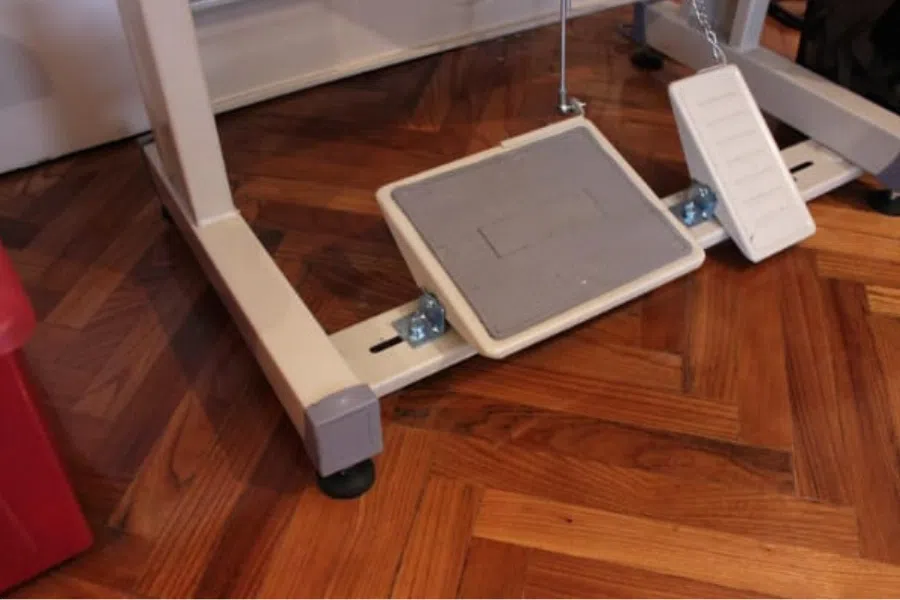
14. Start/ Stop/ Operational Control Button
Did you know that you could even use a machine without a foot pedal? Because technology has allowed a feature in the computerized parts of sewing machines to start and control your sewing speed with buttons.
When you press the start button, your machine will start sewing. As you increase the speed through the speed button, it will start sewing faster.
These types of machines can be used with a detachable foot pedal too. Once the foot pedal is attached, it will override the Stop/ Start and control buttons.
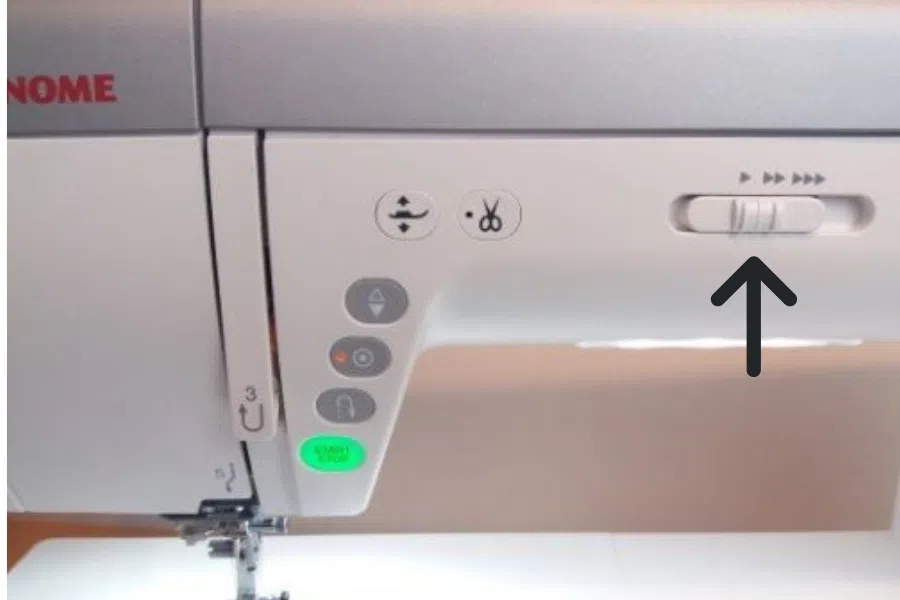
15. Speed Control Lever
The speed control lever actually controls the speed of the sewing. Once it is set upon a certain speed limit, your sewing speed will not increase no matter how hard you press the foot pedal.
Eventually it is helpful if you are a beginner and do not want to harm yourself with an uncontrollable sewing speed.

16. Reverse stitch lever
A reverse stitch lever is one of the parts of a machine that allows a reverse stitch. It is designed to make the stitches firm and make a perfect seam. You can easily lock your stitches at the end of the sewing.
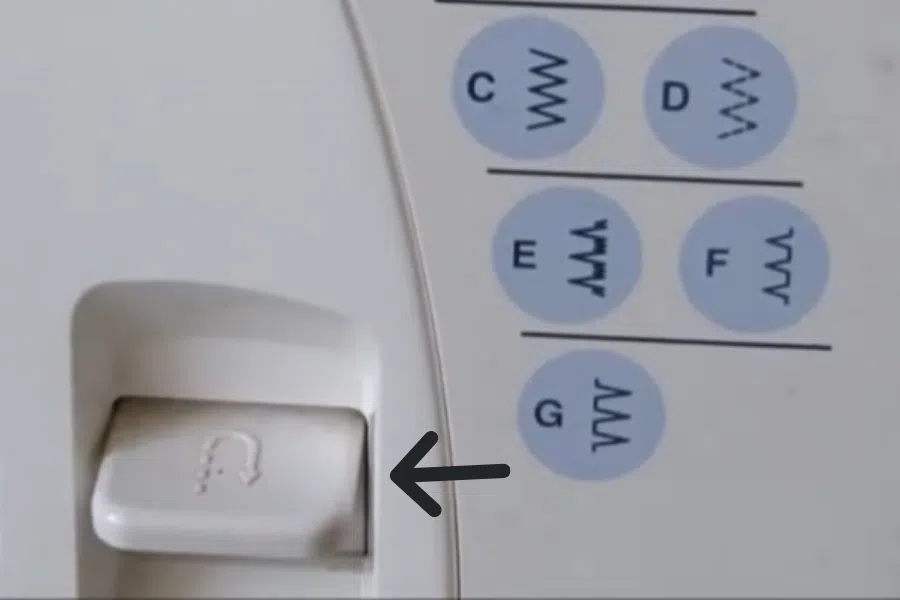
17. Needle threader
A needle threader is a small device that comes with a sewing machine as a part. It helps you to put the thread through the eye of the needle.
If you find it hard to thread your needle, this small but helpful device can do it for you. By using a needle threader, now you don’t have to put enough strain on your eyes.

18. Needles, one of the main parts of a sewing machine
Needles are the tiny main part of a sewing machine that performs the whole thread stitching through the fabric. There are plenty of sizes in it! The sizes of needles used can vary upon the type of machine, fabric, or function performed.
A needle is inserted into the needle clamp by loosening the screw with a screwdriver. Once you have placed your needle in the right position, you can tighten the clamp screw to make a firm grip around the thick bottom of the needle.
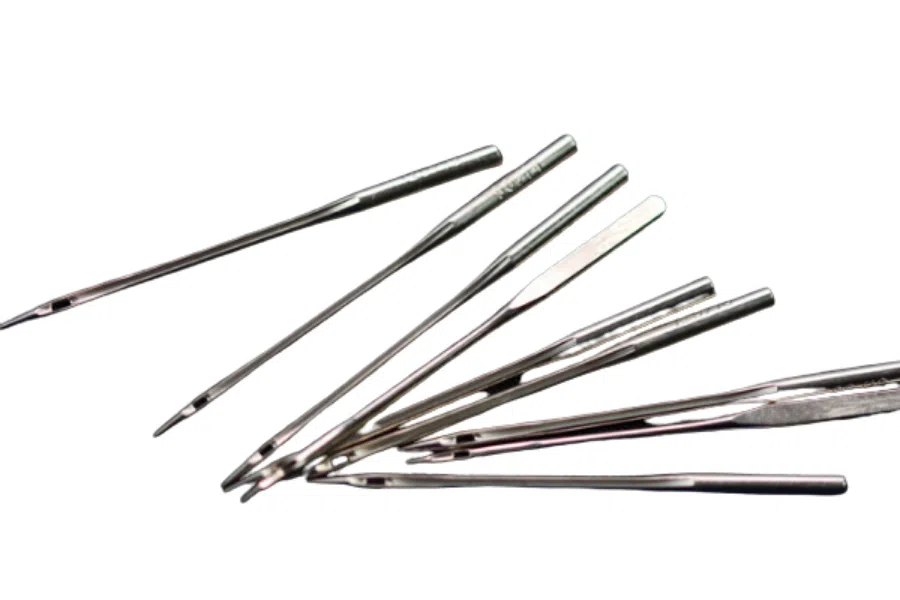
If your needle is bent, stale, or rough, you need to change it immediately. Because it can destroy the fabric, more chances are if it breaks, its broken parts may get stuck in the bobbin winder. In this case, you probably would be needing a sewing machine repairer. You can take a look at other sewing tools that may help in easing the process of sewing.
19. Needle Clamp
It is a clamp that actually holds the needle tight. It is found over the needle plate. Whenever you want to change or insert a needle in the clamp, initially, you have to open its screw with a screwdriver.
Once your needle has been placed in the perfect position, you can move ahead by tightening the screw of a needle clamp.
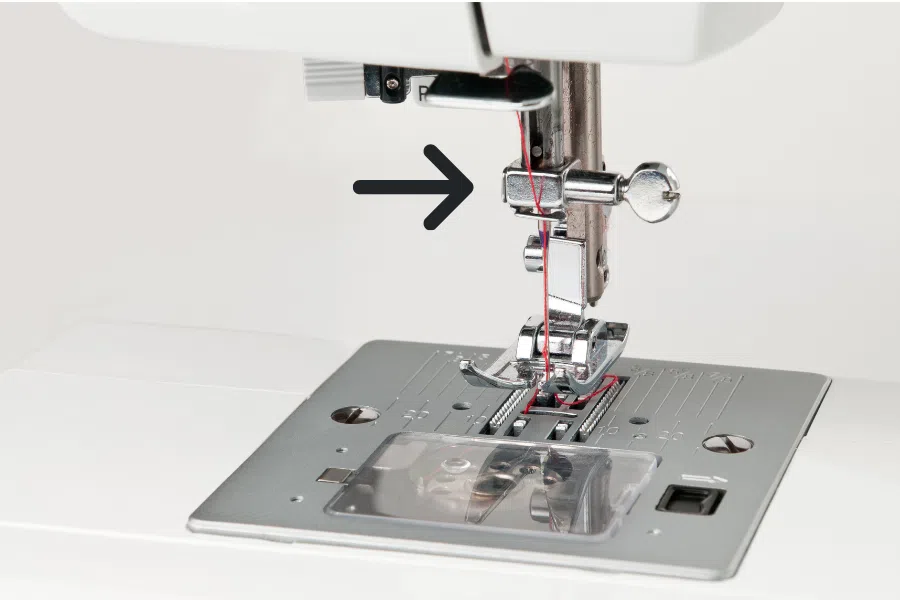
20. Needle Positioning Button
Those who have affixed the needle manually in a needle clamp know how crucial it is to position it just right! Because even a little bit of bad positioning can lead to a needle breakage or messy sewing. A needle positioning button is available in the computerized sewing machine. They tell if the needle needs to be raised or lowered for the right positioning.

21. Needle plate /Throat plate
It is a plate with holes. Usually found under the presser foot and the needle. It allows the needle to pass through the holes while stitching. Moreover, it also displays the fabric right over it for perfect stitching.
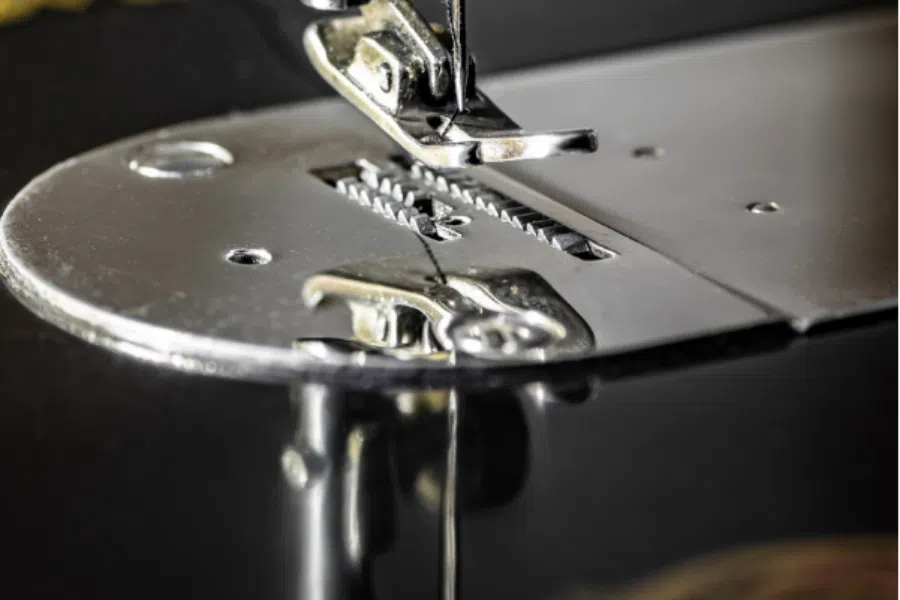
22. Double Needles
Double needles are actually twin needles attached to a single shank. These are used for embroidery purposes. Both the needles are threaded from two thread spools (one for each). In this activity, one of the needles is smaller than the other because it makes it easier for the bobbin to catch thread from both needles.
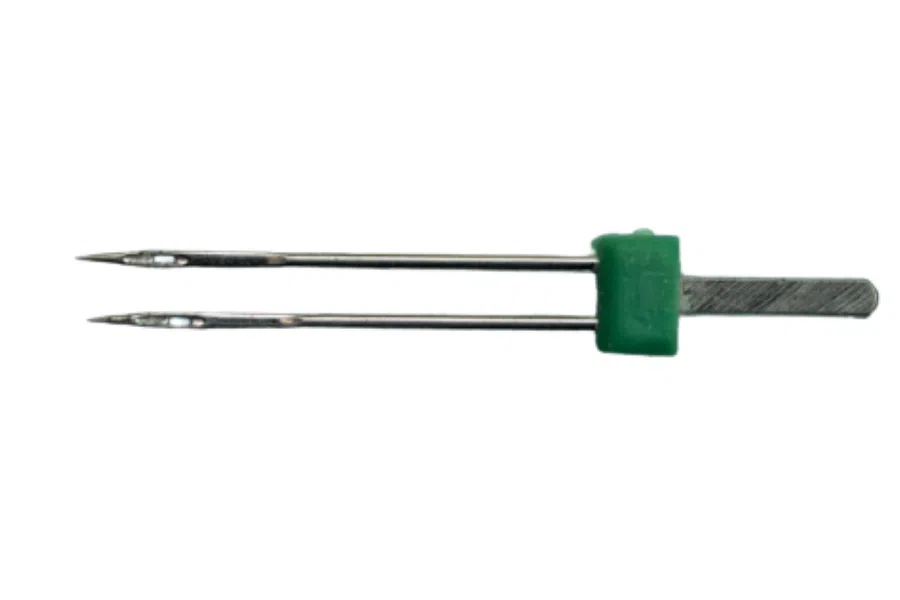
23. Presser Foot holder
Just like the needle, a presser foot is attached with a presser foot holder. The only difference here is that it is barely adjusted or changed once it is fixed.
You should never ignore the fact that a presser foot needs to be fixed appropriately for perfect results. A presser foot is fixed into the holder with the help of a screwdriver that comes as one of the parts of a sewing machine.

24. Needle presser foot
It is located below the needle. This keeps the fabric in place while the needle passes through it, making stitches. There are tons of sewing machine feet used for multiple purposes. However, few important ones are listed below, along with their purposes:
An all-purpose foot is used for multiple purposes. But the main of all is straight stitching with a single needle.
Satin Foot
The satin foot is used for dense stitching like applique etc.
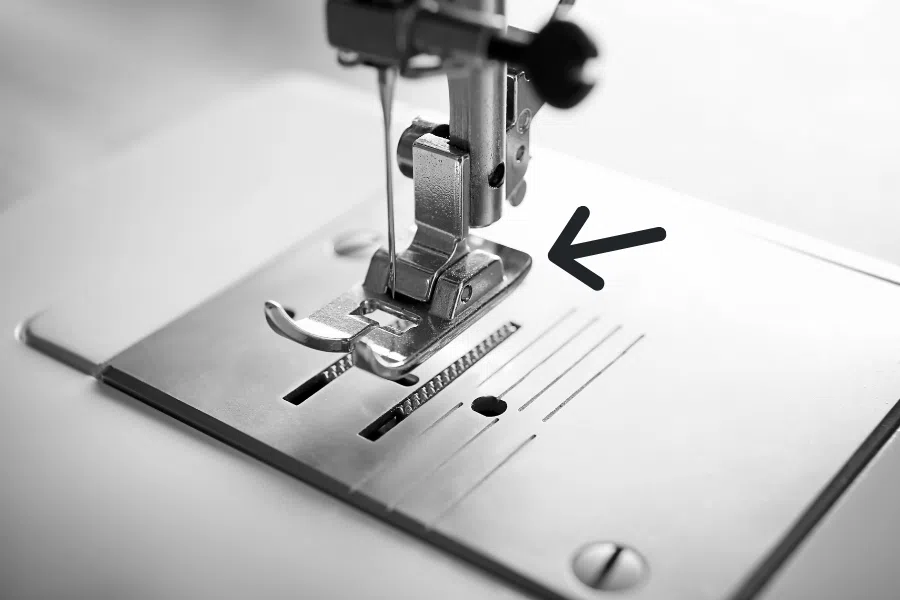
Zipper Foot
Zipper foot is narrow because it is used for stitching closely around the zipper.
Quarter-Inch-Foot
The quarter-inch foot is usually used for quilting or crafting projects.
Gathering Foot
Gathering foot is used for the lightweight, silky fabric to make tiny pleats across while it stitches.
Buttonhole Foot
Buttonhole foot allows you to adjust the button under the presser so the needle can stitch through the holes evenly.
To get an insight on how you should approach your sewing projects as a beginner, you can check visit this website often for your guidance.
25. Presser Foot Lever
A presser foot lever lifts the presser foot above the needle plate, giving ample space to place the fabric below it before starting the sewing process. It is also known as the bar lifter.
Before placing the fabric beneath the needle, make sure your needle is raised enough to make fair space. Once you pull the lever down, it will sit on the fabric to make it smooth and even while stitching.
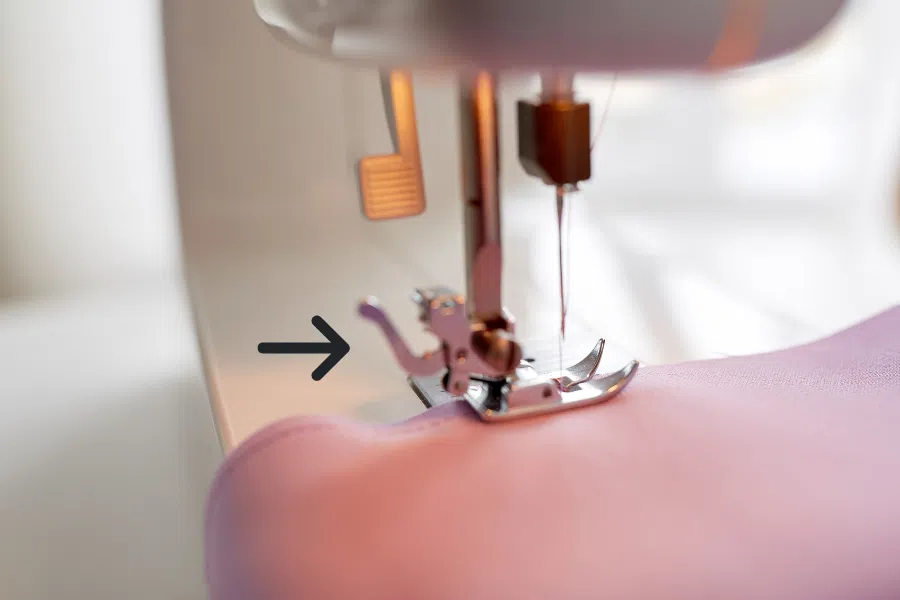
26. Oil Tank
Some sewing machines have an oil tank beneath their main body under the bed. It is usually filled up with sewing machine oil. Along with the power supply, it works as fuel to the machine’s full body.
When the oil gets dirty with debris and thread pieces, you can filter it and pour it back or replace it for smooth functioning. This significant part of a machine shall always be found filled up with a lot of machine oil!
This oil tank basically has cotton threads hanging from the machine to the oil tank, which keep oiling the internal parts to ease your oiling responsibility. Through this oil tank, the oil reaches the crucial areas of the machine internally. These machines are normally self-oiling sewing machines. Although, you may need to oil some external parts by yourself.
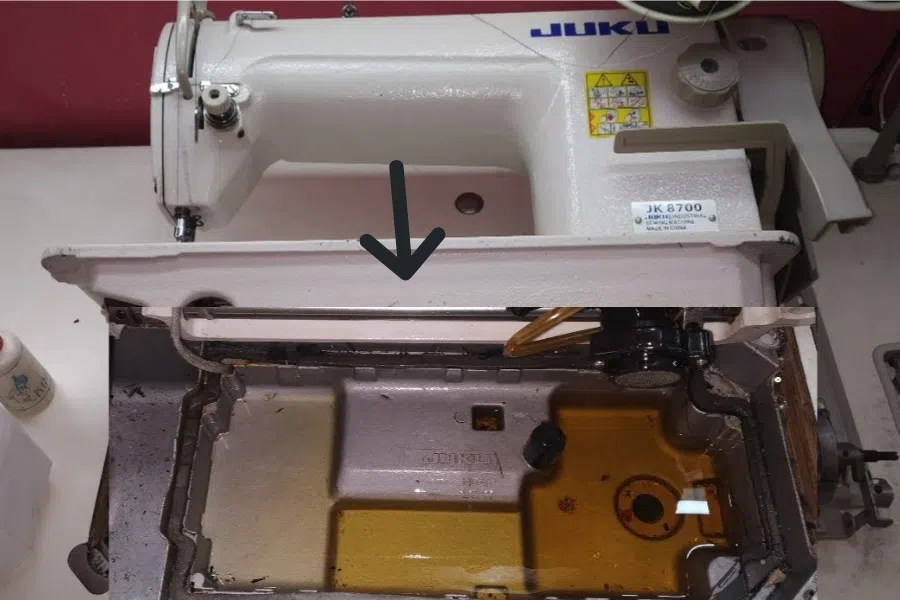
27. Feed Dog
As the name is indicating, it basically feeds fabric to the machine. These are tiny teeth under the needle plate that move at a certain speed. Their speed is determined by the pressure provided to the pedal.
They help in moving/ feeding the fabric to the machine while you sew. A feed dog is one of those parts of a machine that keep the fabric moving while you perform your creativity. However, if the feed dog fails to function, sewing cannot be performed.
A feed dog is more like a fabric supplier of fabric to the sewing machine. As soon as it takes fabric to the right spot, sewing takes place just then.
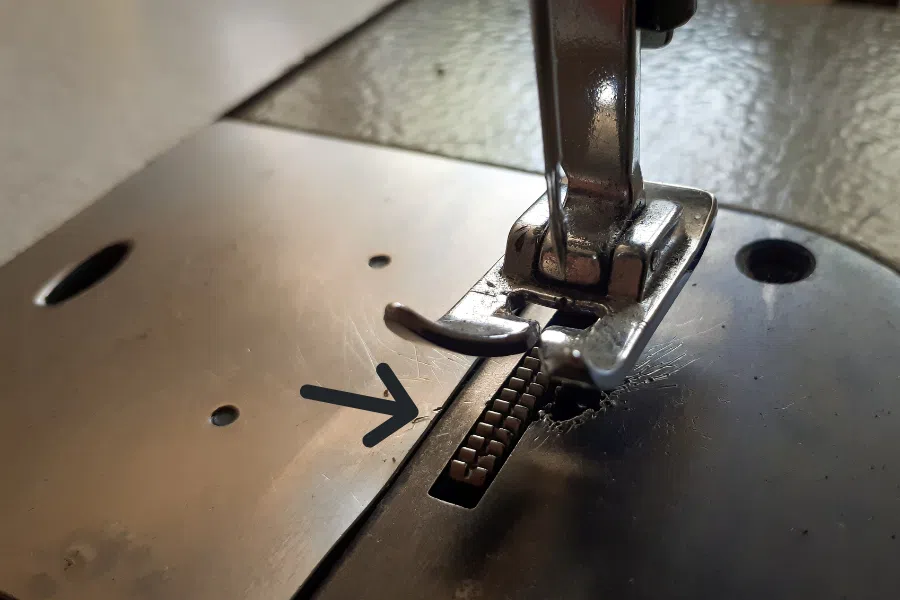
28. Handwheel
It is a wheel appearing on the right side of the machine. It moves the needle up and down while you move it. This hand wheel is usually used when you end the sewing and firmly lock the final stitch. It is also used to lift the need while trying to place the fabric beneath the presser foot.
These sort of handwheel sewing machines are no more used at households because these are older versions. Whereas, a few models still come with a handwheel that are handheld, probably used for sewing leather. However, there is still the chance of finding one of these in your house somewhere, inherited by your grandmother!
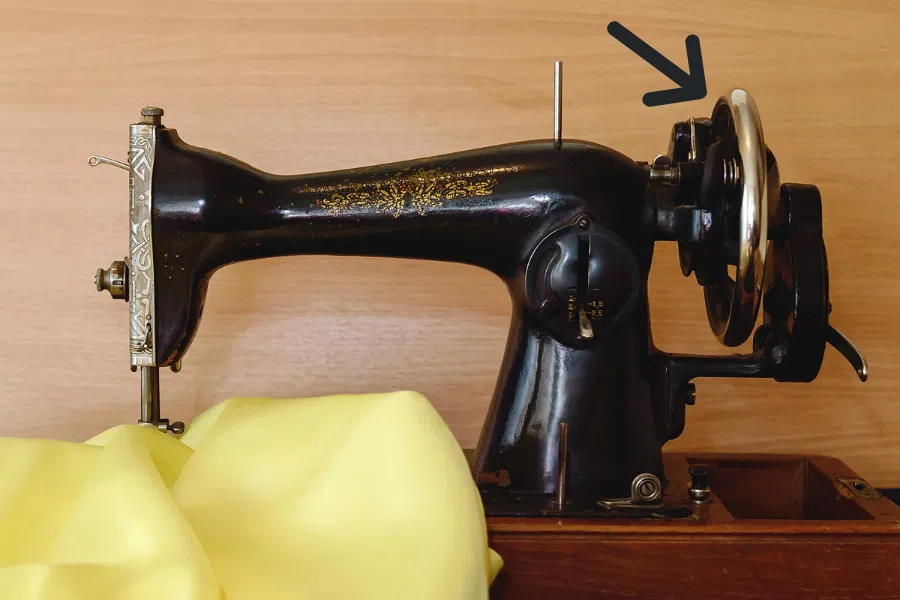
29. Stitch Size Regulator
As the name indicates, it is a regulator used to set the size of a stitch. Because different kinds of projects may require different sizes of threads, whether you want big stitches or tiny compressed ones, you can always adjust their sizes based on your needs.
A stitch size regulator allows you to be creative during your stitching. Because you can use big stitches over the fabric where you would like to show the thread stitched right through.
Moreover, different types of fabric require different kind of stitch size. Hence, you can adjust the size and make your sewing simpler!
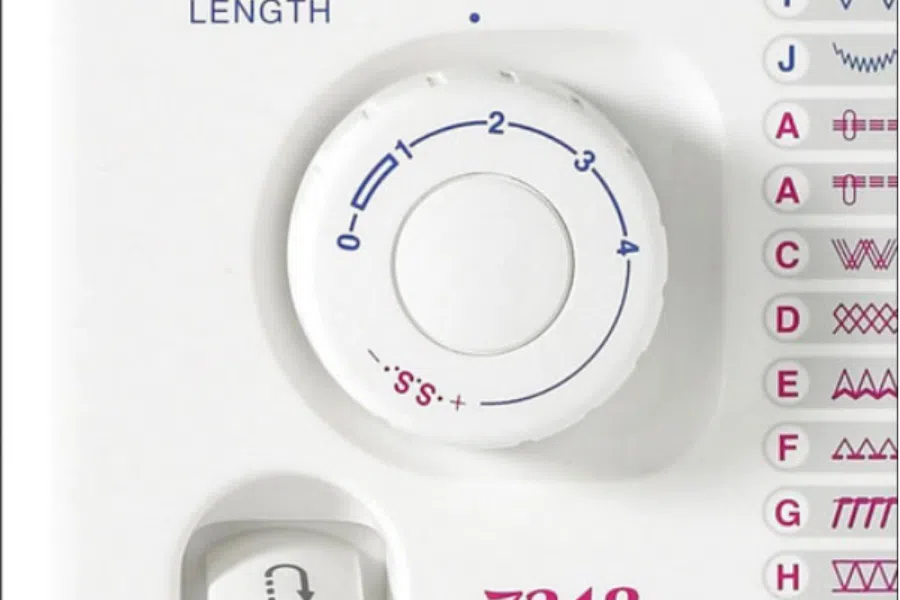
30. Stitch Selector
In computerized machines, there are often plenty of stitch designs to select from. It appears as a regulator or button beneath every individual design. You can select from the regulator by moving the indicator on your desired design. Or press the button under the relevant design.
It is usually shown on mechanical sewing machines, while computerized sewing machines have LCD to display stitches to select from with a matter of just one touch!
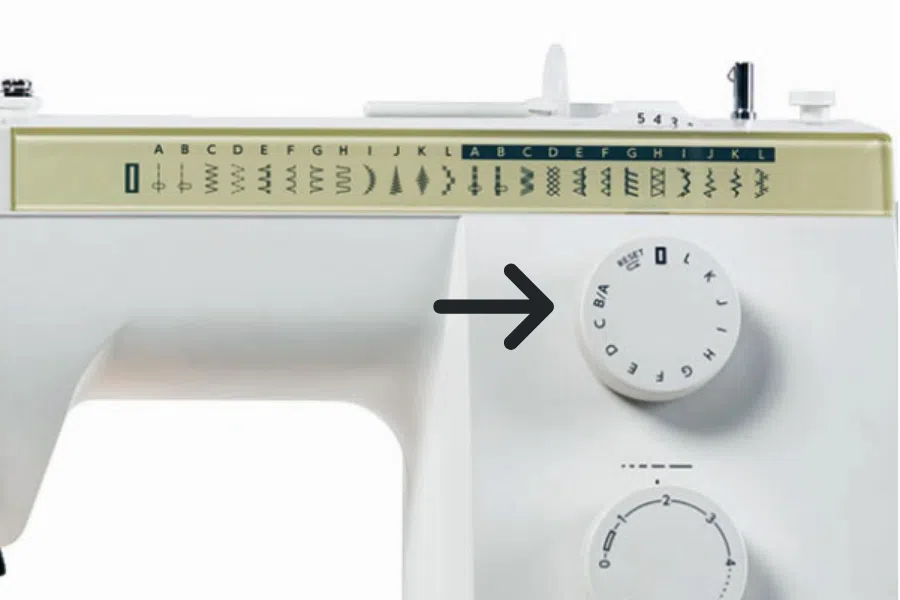
31. Storage Section
Every sewing machine has a storage box beneath the main body or at the side. It may be in the form of a box or a drawer to keep your sewing tools and accessories safe. Some may appear like a square box, while others have multiple sections to keep tiny things like needles, buttons, threads, fabric hooks, etc.

32. Spool Pin
The spool pin helps to hold the thread spool in the right position. They are usually straight, but sometimes you may see vertical spool pins. However, their purpose of holding the thread spool remains the same. You may find two or more spool pins on a machine. The reason behind this idea is to use two threads at a time depending upon the stitching needs of the sewing machine user.

33. Ruler
Machines with built-in tables and affixed pedals usually come with a ruler on the front side of the table vertically. It allows you to make perfect stitching measurements while you sew. The ruler is found in both measurements, centimeters, and inches.
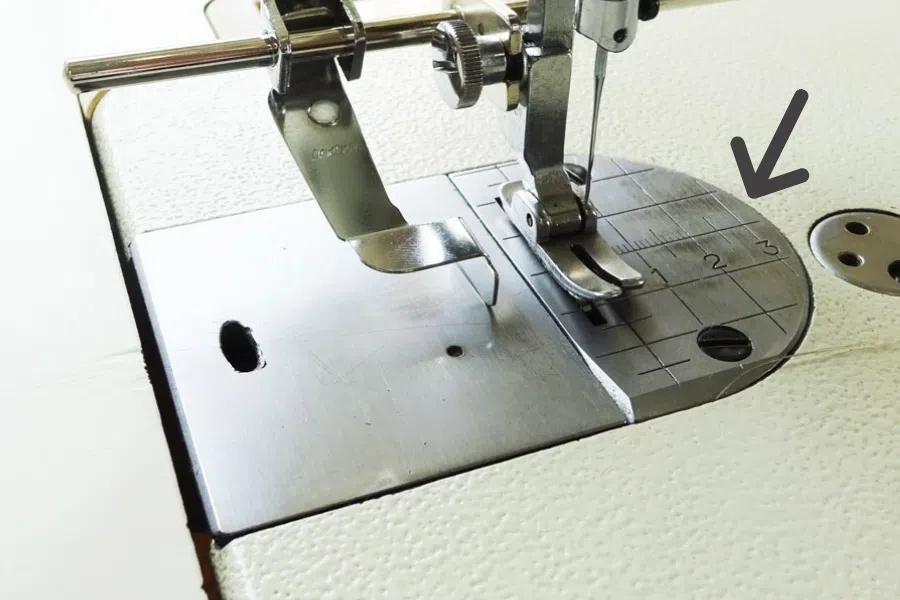
34. Spool Caps
Spool caps are small-cap that secure the thread spool on the spool pin. Without the spool cap, the thread may come off due to the pulling force of the thread take-up lever.
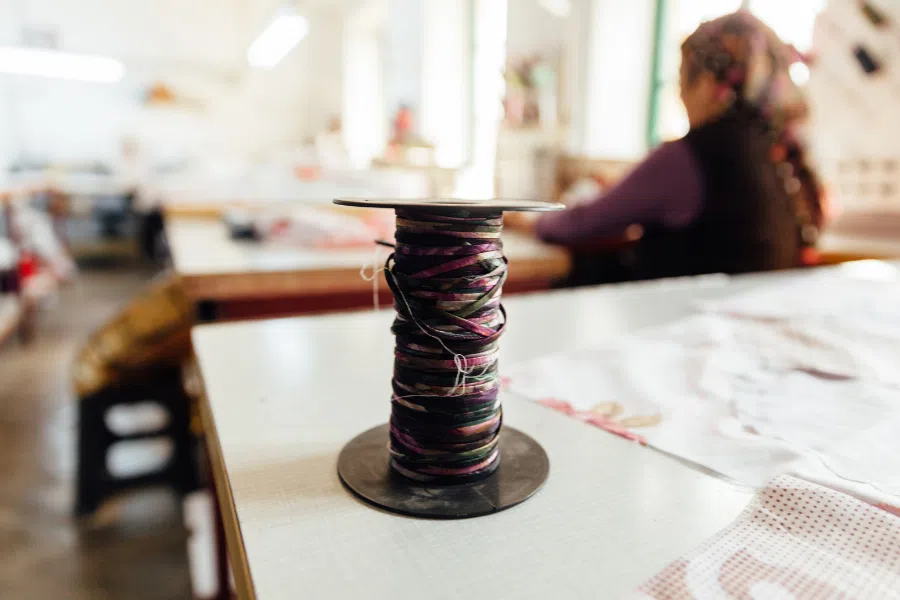
35. Button Shank Plate
The button shank plate is used for attaching/ stitching buttons on thick fabric like leather, denim, and multiple layers of fabric. It helps to keep the button in the right place while securing the stitches evenly.
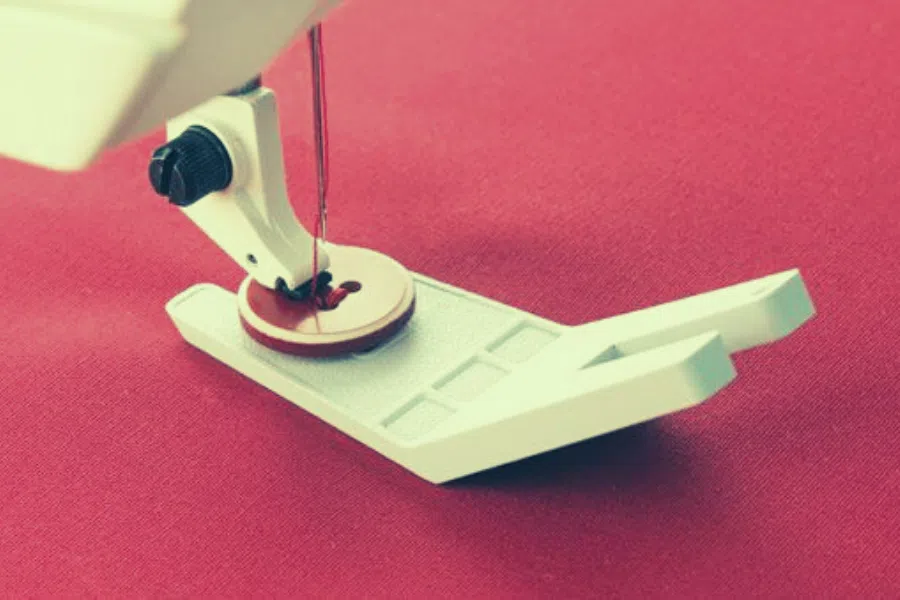
36. Felt Cushion
A felt cushion is a small round foamy disk. It is pierced onto the spool pin under the thread spool. It helps the thread spool to spin smoothly.
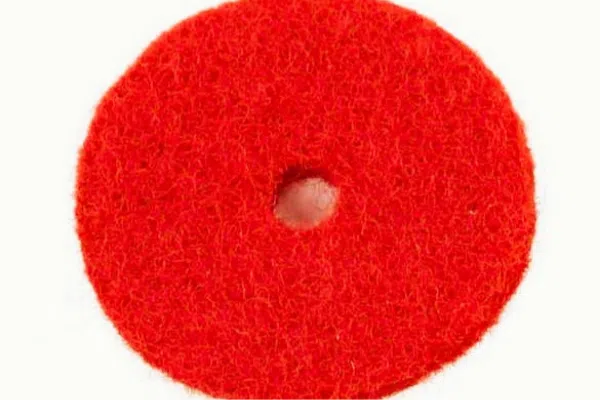
37. Lamp / LED Light
The sewing machines with an attached table usually come with a lamp. The bulb is affixed on top of the pole attached to the sewing machine. The lamp can be adjusted as per your position. In the newer versions, you will find an LED light coming above the needle.
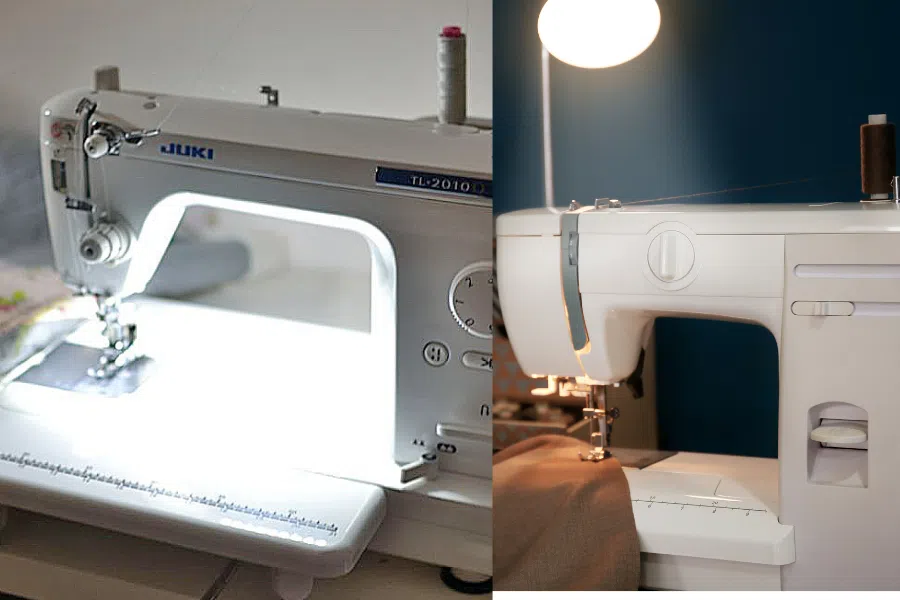
Conclusion
Knowing about the parts of a sewing machine is as important as learning this skill. You need to understand which part is where, and what functions it performs. This way as a beginner, you can make your learning journey easier and enjoyable.
Picture Credits: Canva.com
Frequently Asked Questions
Which parts of the machine need to be oiled?
Every machine is differently oiled because some have a self-oiling setup that needs minimum oiling. In comparison, some need to be oiled completely. The best approach is to refer to your sewing machine manual for the correct answer.
How do I change the needle of a sewing machine?
Before you open the screw of the needle clamp, you need to hold the needle with one hand while using the screwdriver with the other hand. By this, you make sure your needle does not fall beneath the needle plate.
Once the needle comes off, you can place the new needle in the needle clamp by holding it straight in the right position. Once you are sure that your needle has been firmly placed, you can remove your hand from the needle.
How often do I oil my sewing machine?
The more you use your machine, the more often you should oil your machine.
However, make a routine of oiling your machine every three months. Also, get it serviced and checked by a professional at least once a year. This practice gives a chance to maintain the sewing machine in good condition and save the maintenance cost. Because once you keep servicing it once a year, there are fewer chances of it going out of order.
